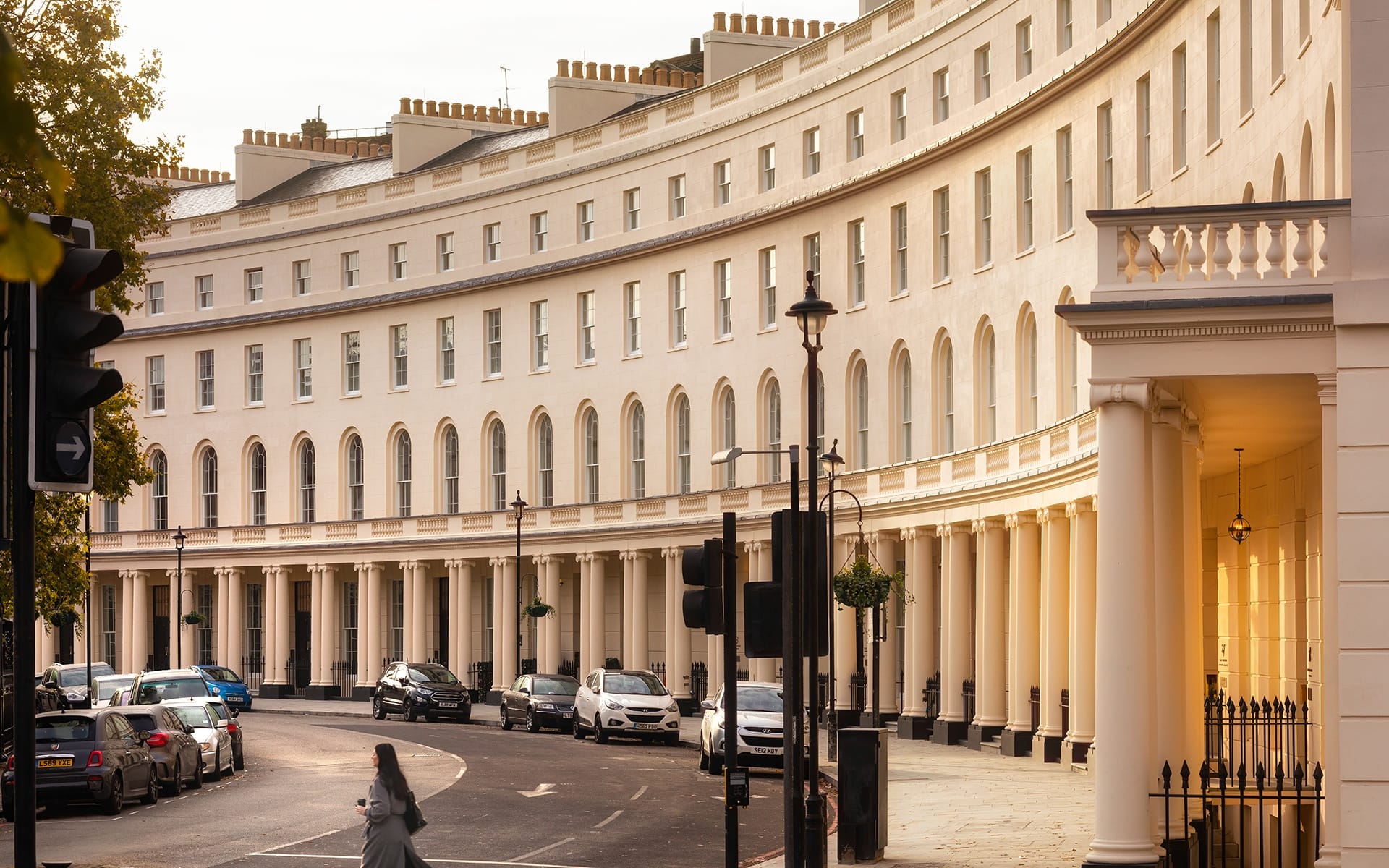John Nash’s Iconic Park Crescent in London Has Been Gloriously Reborn
The 200-year-old Regency structure was reimagined as contemporary apartments and garden villas

Originally constructed some 200 years ago on the edge of Regent’s Park in London, Buckingham Palace architect John Nash’s iconic Park Crescent has been reborn as Regent’s Crescent, a collection of 68 refined residences befitting their royal pedigree.
After suffering major damage during World War II, the colonnaded structure was replaced in the 1960s by an office building sporting a lackluster imitation of its Regency-style façade. In 2013 PCW Property Holdings acquired the Grade I–listed property and sought to replace it with one that was more historically representative of Nash’s vision. So developers CIT and architecture firm PDP London got to work, collaborating with the Museum of London Archaeology and Historic England in order to fully comply with local preservation ordinances.

Among the Regency-inspired features that have been faithfully reconstructed are grand front doors, fanlights, stone steps, traditional railings, and chimney stacks. “It is an honor to be working on a building of such historical merit and importance,” said Ian Law, partner at PDP, in a statement. “Grade I–listed projects are both challenging and hugely rewarding, and with Regent’s Crescent, we have the rare opportunity to honor John Nash’s extraordinary talent and creative vision.”
A shock came during construction when the team uncovered an intact subterranean ice house from the 1700s. The red-brick ovoid chamber—which historians linked to prominent ice merchant William Leftwich—will be restored and integrated into the project.

The residential interiors, meanwhile, were handled by London design studio Millier, which took cues from the revived architecture to conjure glamorous yet understated spaces replete with plaster moldings, herringbone floors, and marble fireplaces. The results certainly worked on buyers, who have snapped up more than half of the development’s listings. Currently on offer is a $16.9 million triplex that spans 3,000 square feet and features a soothing neutral color scheme with burnished bronze accents.


Amenities include 1.5 acres of residents-only gardens designed by Kim Wilkie and Bowles & Wyer, while the adjacent Park Crescent and Park Square encompass an additional eight acres of exclusive green space. There’s also a subterranean spa equipped with a sauna and steam room, 66-foot swimming pool, private cinema, and a 24-hour concierge.
While the luxury bonafides are undoubtedly important, the architects hope that the undertaking also furthers London’s ambitious goal of being a zero-carbon city by 2050. To that end, they installed on-site energy generation, green walls, and roofs, and other measures aimed at reducing overall energy usage in the hope of ensuring not just sustainability but also longevity of the project as a whole.
A version of this article first appeared in print in our 2020 Fall issue under the headline “Curve Appeal.” Subscribe to the magazine.
